
A very good Saturday morning to all! I hope everyone has had a pleasant week.
If the above image is familiar to you, then you’ve been a Uni Watch reader and follower for a decade or more. Long time readers will remember a time during the early-to-mid 2010s when I would frequently feature graphic depictions of baseball and football scoreboards, created by none other than long-time contributor, and friend, Gary Chanko. We had several collatorations over the years, including Gary’s colorizations of black and white photographs, as well as a “How to Colorize” tutorial.
Additionally, for several years, Gary would design and create graphical representations of scoreboards found in stadia, ballparks and arenas throughout baseball and football — many of which are no longer in existence — with descriptions of the particular scoreboard included. Gary also selected a “frozen moment,” if you will, which contained an image of the scoreboard at an exact point in time.
Sometimes these seemed random moments, whereas other times they depicted the scoreboard at the time of an historical event having just taken place on the field, such as in the seconds after Henry Aaron slugged home run #715, breaking (the then) home run record held by the immortal Babe Ruth down in Atlanta’s Fulton County Stadium.

Gary kept apace of his scoreboard submissions, eventually providing more than 75. At this point, Gary let me know he’d pretty much run out of scoreboards to recreate, and the series ended. Fortunately Gary thought it was worth preserving, and so he set about publishing the series in a book. Gary has now finished that work, which evolved into Classic Scoreboards — An Illustrated History.
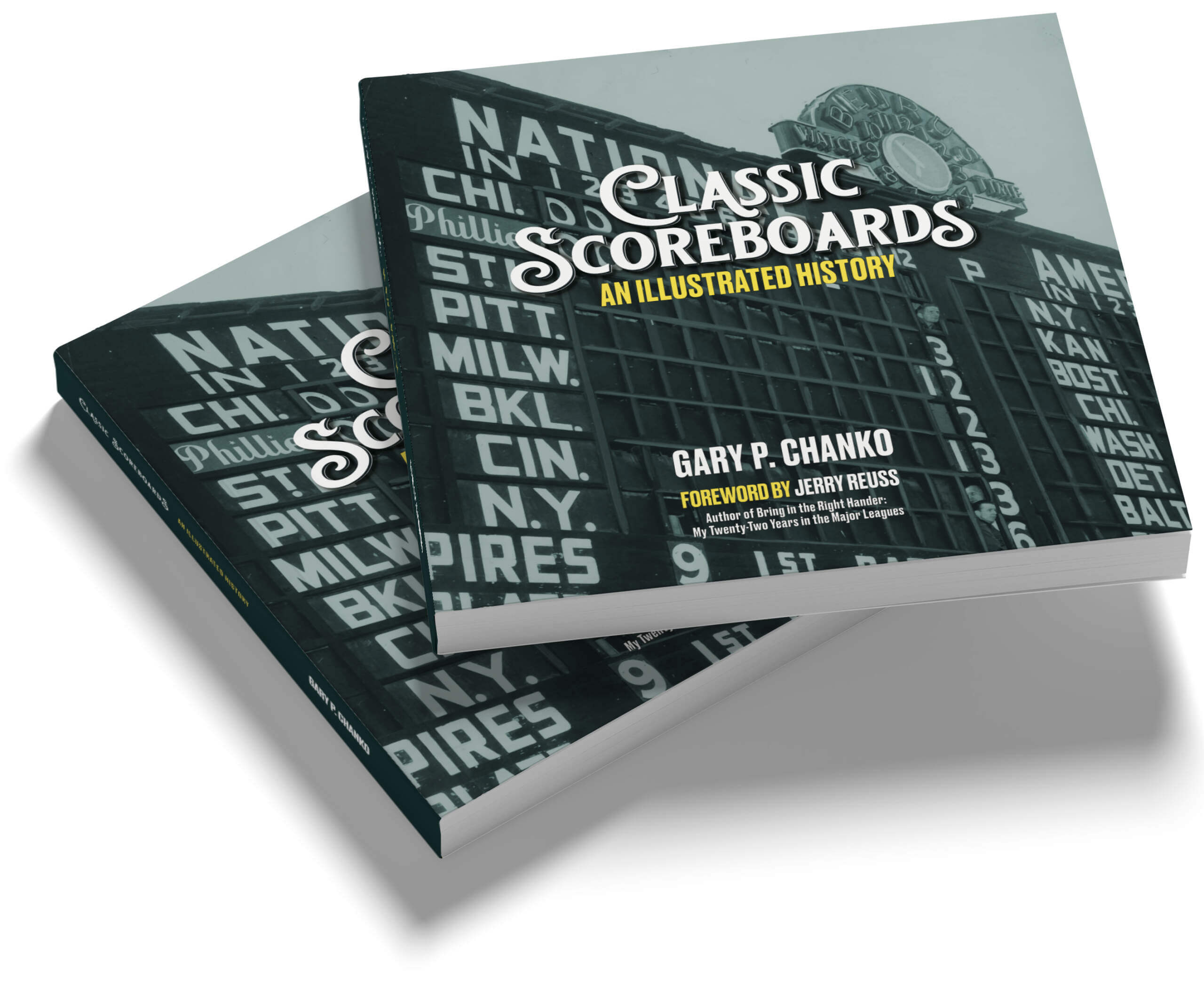
As soon as the book was published, Gary let me know, and sent me an advance copy, which I received earlier this week. I knew it would be fantastic (and it is), so I suggested Paul put it on his 2023 Uni Watch Holiday Gift Guide.
The book is over 160 pages, and aside from all of Gary’s wonderful classic scoreboard illustrations, it’s chock full of additional information which is explained below:

The book includes an Introduction, as well as a Foreword from former MLBer and Uni Watch pal, Jerry Reuss.
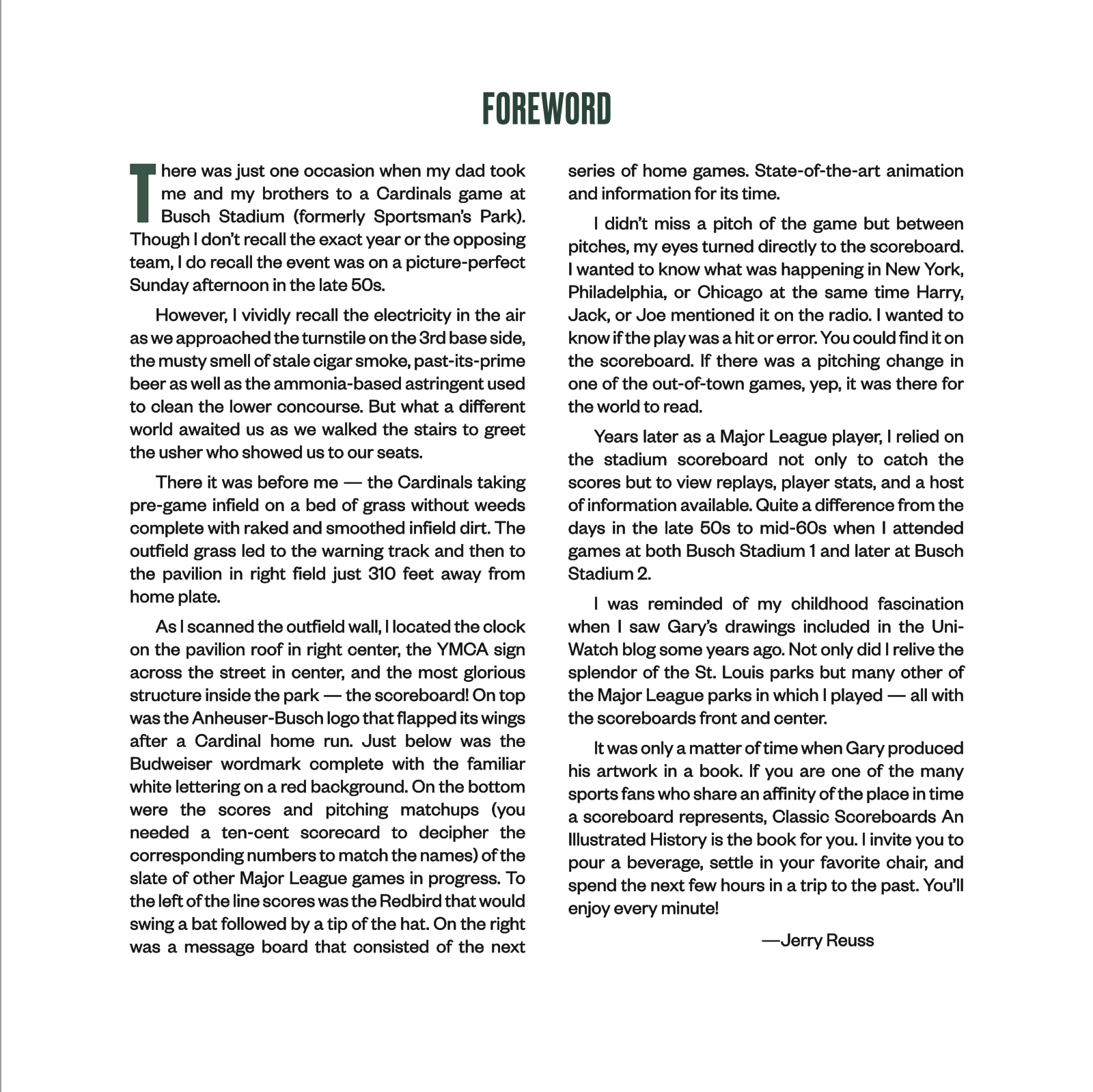
Upon receipt of the book, I had the pleasure of interviewing the author. A transcript is below, edited for length and clarity.
Gary Chanko: Thank you. Because I had no prior experience with any of the print-on-demand publishers, I was concerned about the color print quality for the illustrations. Fortunately the finished product exceeded my expectations.
UW: You mention this at the beginning, in the “Word To The Reader” section, but can you set up the genesis of this project? We’d been working together on UW for a while with you contributing colorizations and other uni-related items. What led you to begin graphically depicting scoreboards?
GC: Sometime during the “colorization” period, I started experimenting with vector graphics. You will recall I prepared a series of vector based graphics of vintage NFL and AFL logos. After that effort I moved on to my interest in ballparks, but focused on notable scoreboard features, not the entire scoreboard.
UW: The style is very minimalistic, which I think is very effective. How did you decide upon this style?
GC: I had seen other illustrators’ works involving sports facilities that employed a minimalistic style. That was the inspiration.
UW: I believe the first scoreboard you sent me wasn’t a full scoreboard — it was a depiction of the iconic clock in Connie Mack Stadium, but from there you moved to depicting the entire scoreboard of Major League Baseball parks. Did you originally plan to create graphic images of certain features, or was the plan always to depict the entire scoreboard?

GC: My initial attempt was the “Ballentine Beer ad portion” of the Connie Mack Stadium scoreboard. I also illustrated the “Mr. Bo” portion of the Griffith Stadium scoreboard. I was satisfied with the illustrations, but they seemed incomplete. So I then decided on illustrating the entire scoreboard.
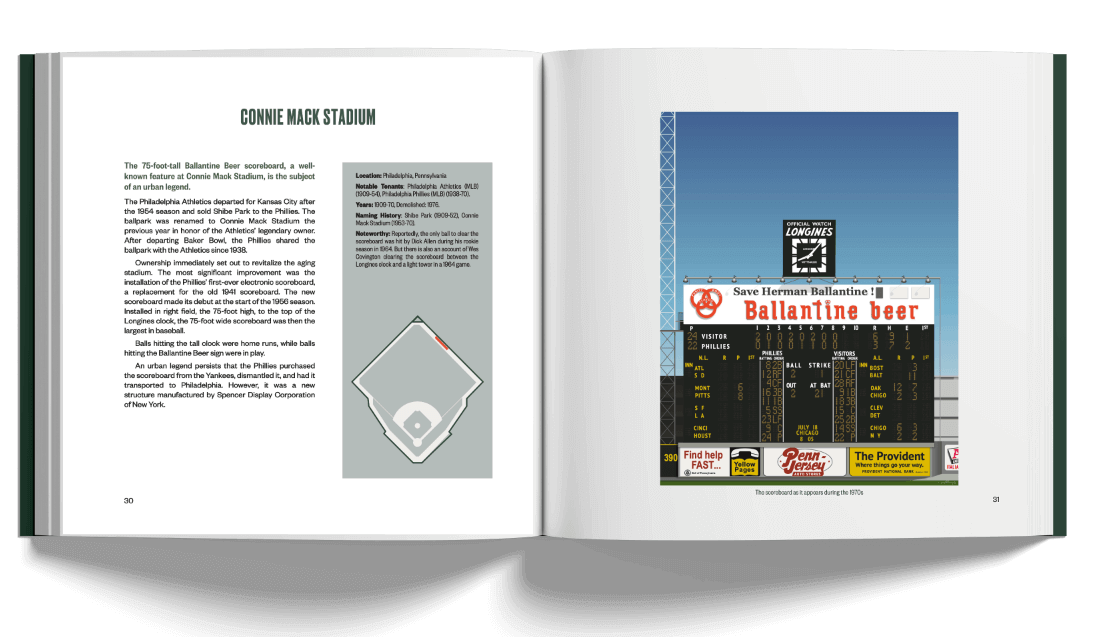
UW: Your early contributions were all for baseball parks, past and present, but then you moved on to some football stadia and arenas. How did you choose which parks to represent (and have you now pretty much covered all of them)?
GC: The series of weekly ballpark illustrations began in September and quickly progressed into football season, so it was a natural transition to football stadium scoreboards. Along the way a Uni Watch reader suggested a hockey arena — I completed two and both are included in the book.

UW: Your earliest scoreboards were of no-longer-existing ballparks (Polo Grounds and Ebbets Field), and from there you began incorporating later-generation parks. Some of these still exist, but there are no “modern” parks like OPACY or GABP. Is that because they don’t (yet) fall under the “Classic Scoreboards” header? Was there a cutoff year (or era) where you decided “this isn’t a classic scoreboard”?
GC: True, the ballparks and stadiums constructed over the past few decades incorporated rapidly improving video technologies into what we used to call scoreboards. These newer creations were not a good fit for what I termed “classic scoreboards.”
UW: Readers will recall, and your book depicts, that each scoreboard you illustrated is from a very specific date, inning and even pitch. What made you decide to go that direction, and how did you choose the date/game you did?
GC: Specific dates and events for the illustrations were largely based on the reference material used, typically photos. For some illustrations I may have combined events from a couple of different dates. Kansas City Municipal Stadium is an example.
UW: Some of the dates chosen are obvious in the sense they captured an iconic moment in history, like when Henry Aaron hit his 715th home run in Atlanta to smash Babe Ruth’s record. Others are seemingly random. How did you go about selecting each “moment in time”?
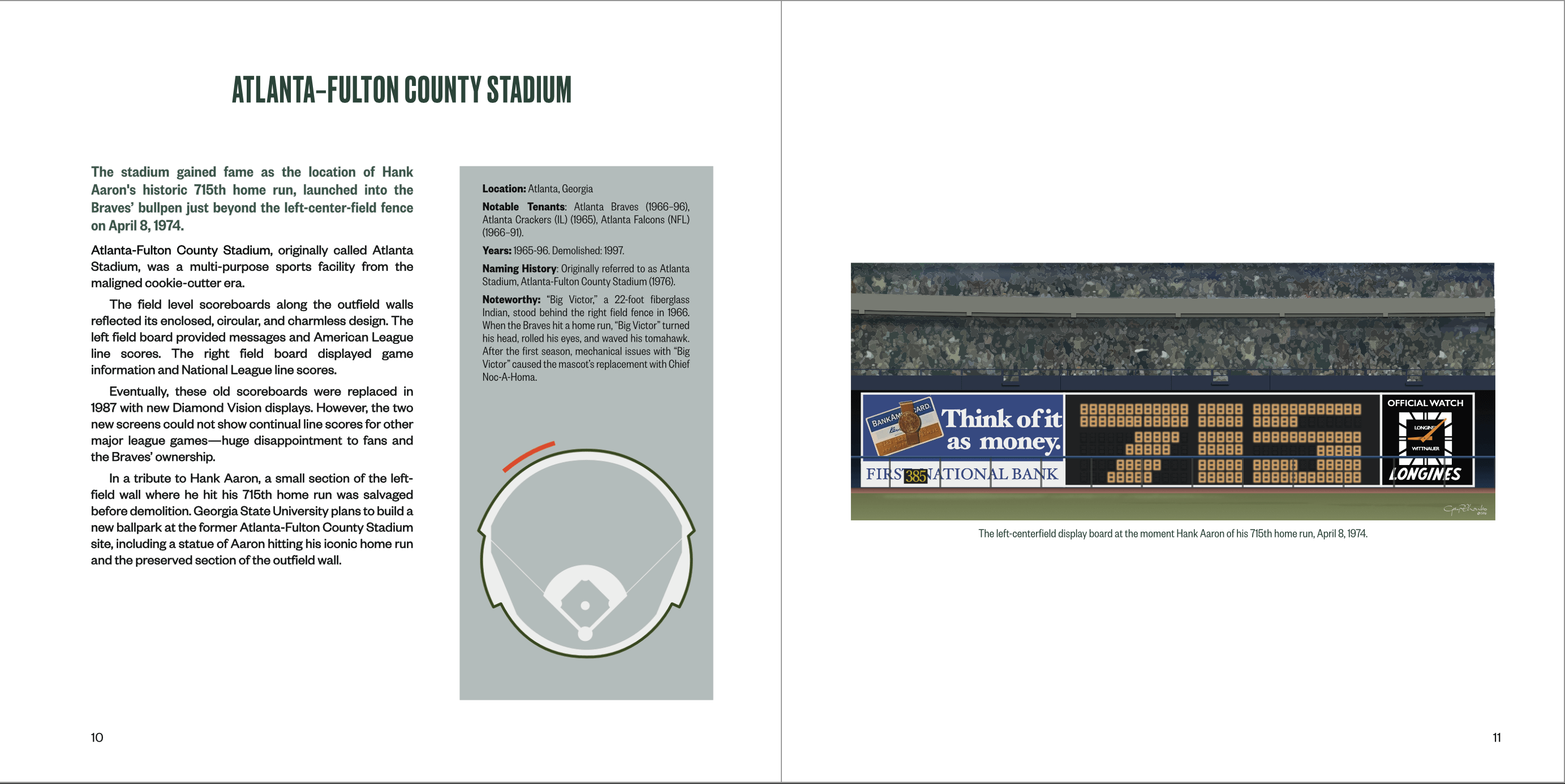
GC: Again, many were a result of the reference material used. I selected notable events when photo references were available, such as Aaron’s legendary home run. In some cases the event was a Uni Watch reader request, like Ichiro’s single season hit record at Safeco Field.
UW: I note in your Shea Stadium graphic, it depicts the scoreboard graphics for the Grand Opening day for the park, but the scoreboard shows a different game in progress. Was that because a photo of the scoreboard taken that day showed this moment?
GC: Yes, that and some artistic license. For Shea Stadium, I wanted to show the garbled scoreboard message – an unfortunate start-up result of the massive new electronics designed into what was then a state-of-the-art structure.

UW: What kind of research did you do for each scoreboard? And did you have a photograph of every ballpark?
GC: The research included my personal library collection, but mostly Internet resources. The book’s Bibliography is pretty extensive — hopefully useful for future researchers. I believe every illustration had some form of photographic reference. Photographers were not taking many scoreboard pictures for many of the older venues, so reference materials were typically sparse, particularly color photographs.
UW: Each ballpark, stadium or arena depicted features a graphic of that venue’s scoreboard, but there’s also a lot of additional material about the park. What’s included with each?
GC: The scoreboards lived within the sports venues and were, in many instances, “features” closely associated with the facility — such as the iconic Ebbets Field scoreboard. I believe the story behind each scoreboard had to include relevant, and often obscure, information about the individual ballpark, stadium, and arena.
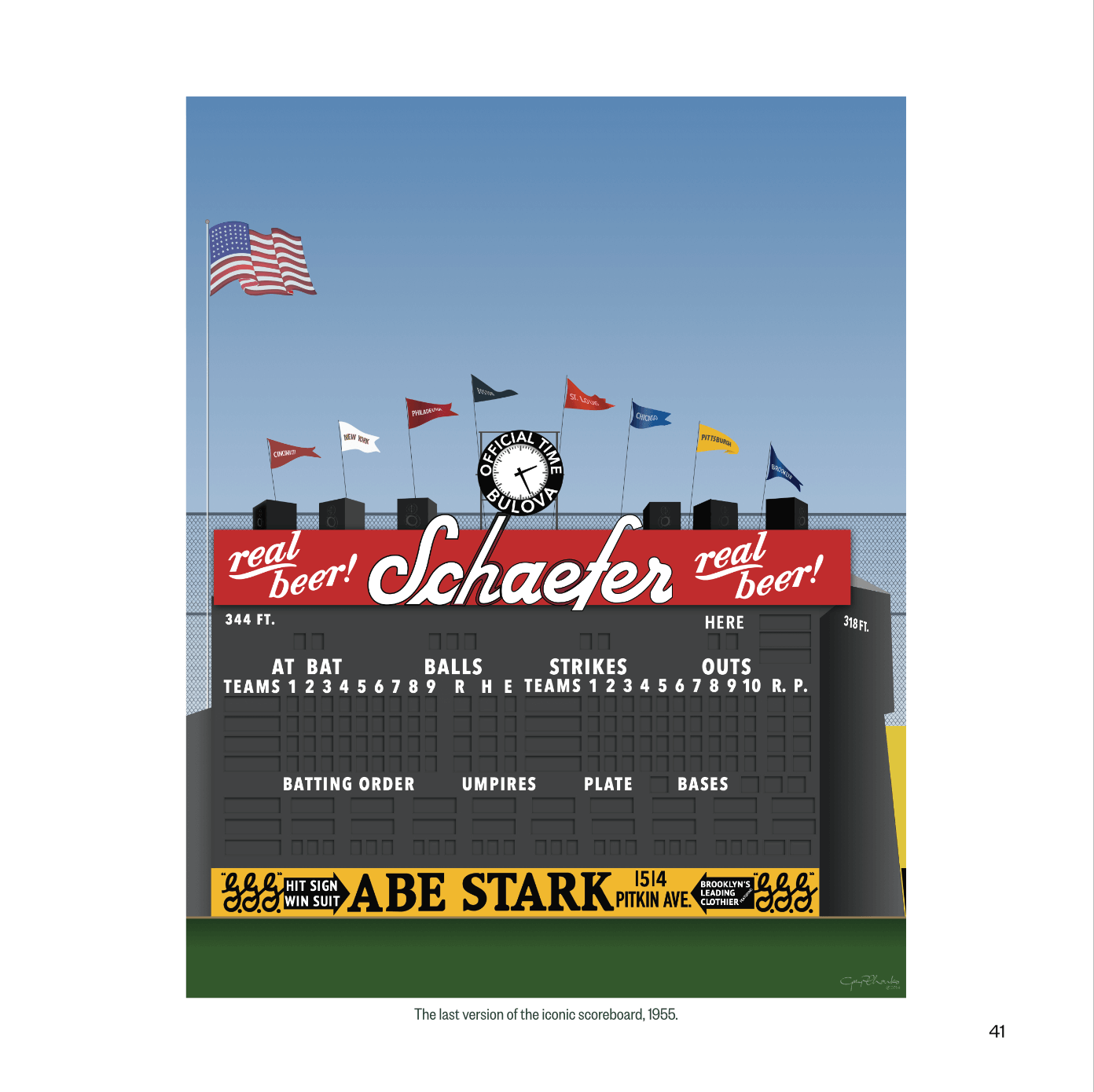
UW: There is a very nice Foreword from UW friend Jerry Reuss, who first noticed your drawings on Uni Watch. Was he involved with this project as well, or was he simply struck — as I was — with the simple beauty of each scoreboard? Obviously, he played in a number of the ballparks you depicted.
GC: Jerry was an enthused supporter of the effort. The Foreword he wrote provided the perfect stage- setting introduction.
During his playing days, Jerry photographed many of the old ballparks. These photos were a useful resource for several of the illustrations, particularly Montréal’s Olympic Stadium.
UW: After this series on UW ended, what made you decide to turn these renderings into a book?
GC: A combination of my own interest in preserving the collection of illustrations and several Uni Watch readers’ suggestions.
UW: Once you decided to create this book, how long did it take from idea to completion? Was it more difficult that you first imagined?
GC: The effort took about ten times longer than expected! I had no prior experience with self-publishing, so it was like being in a dark room looking for a light switch. That coupled with a series of unplanned interruptions turned what I imagined as a few months’ effort into several years.
Still the effort was worthwhile and I’m thinking of another book that should have appeal to Uni Watch readers who like to experiment in uniform concepts. I’ll hope to have more information on that early next year.
UW: Oooh. I’m excited for that! Are there any ballparks you haven’t included in the book you’d like to depict in the future?
GC: I think so. I wanted to include Clark Field (the most bizarre baseball venue ever) in the book, but wasn’t able to complete the illustration on time. There are a few ballparks and college stadiums I might complete, such as San Diego’s Lane Field. Perhaps these will appear on a future weekend edition of Uni Watch.
UW: Absolutely! Anything else you’d like Uni Watch readers to know about this project?
GC: Self-publishing is much more difficult then it may appear. This was particularly the case for me because I was author, illustrator, book designer, and copy editor.
The perils of being your own copy editor include continuing to find corrections after endless inspections. It reached a low point when I was reviewing the author’s proof copy and found I had misspelled “scoreboards” in the book’s front matter!
The book’s manuscript contained about 27,000 words, so the cost of hiring a professional for copy editing wasn’t practical for a non-professional like me.
Web-based content editors, such as Grammarly and others are useful and do catch many errors, but they don’t always find every mistake, particularly typographic errors.
UW: How can readers order a copy? And is there a finite amount available in a “first printing,” or will these be produced depending upon demand?
GC: Copies are currently available through Amazon and stocks are extremely low as we approach the holiday season…
Just kidding, books are printed on demand and delivered relatively quickly.
UW: Thanks so much Gary!
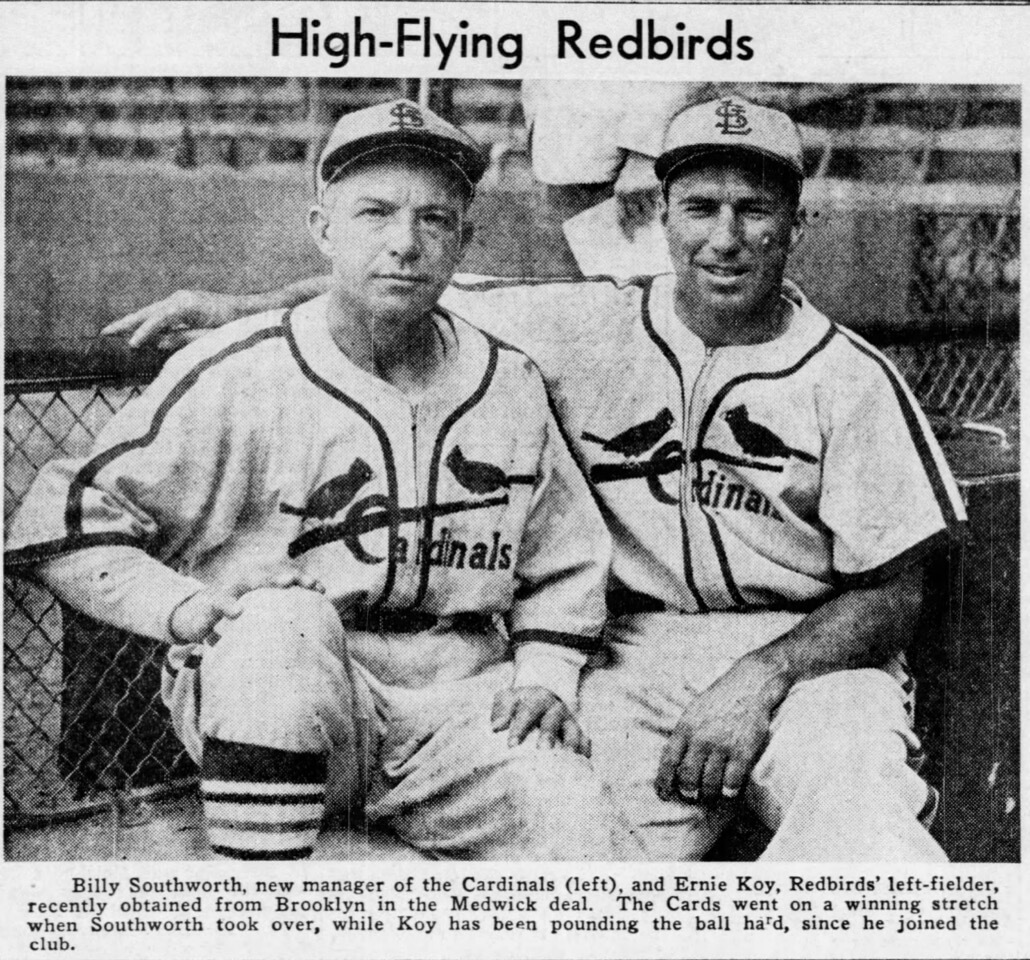
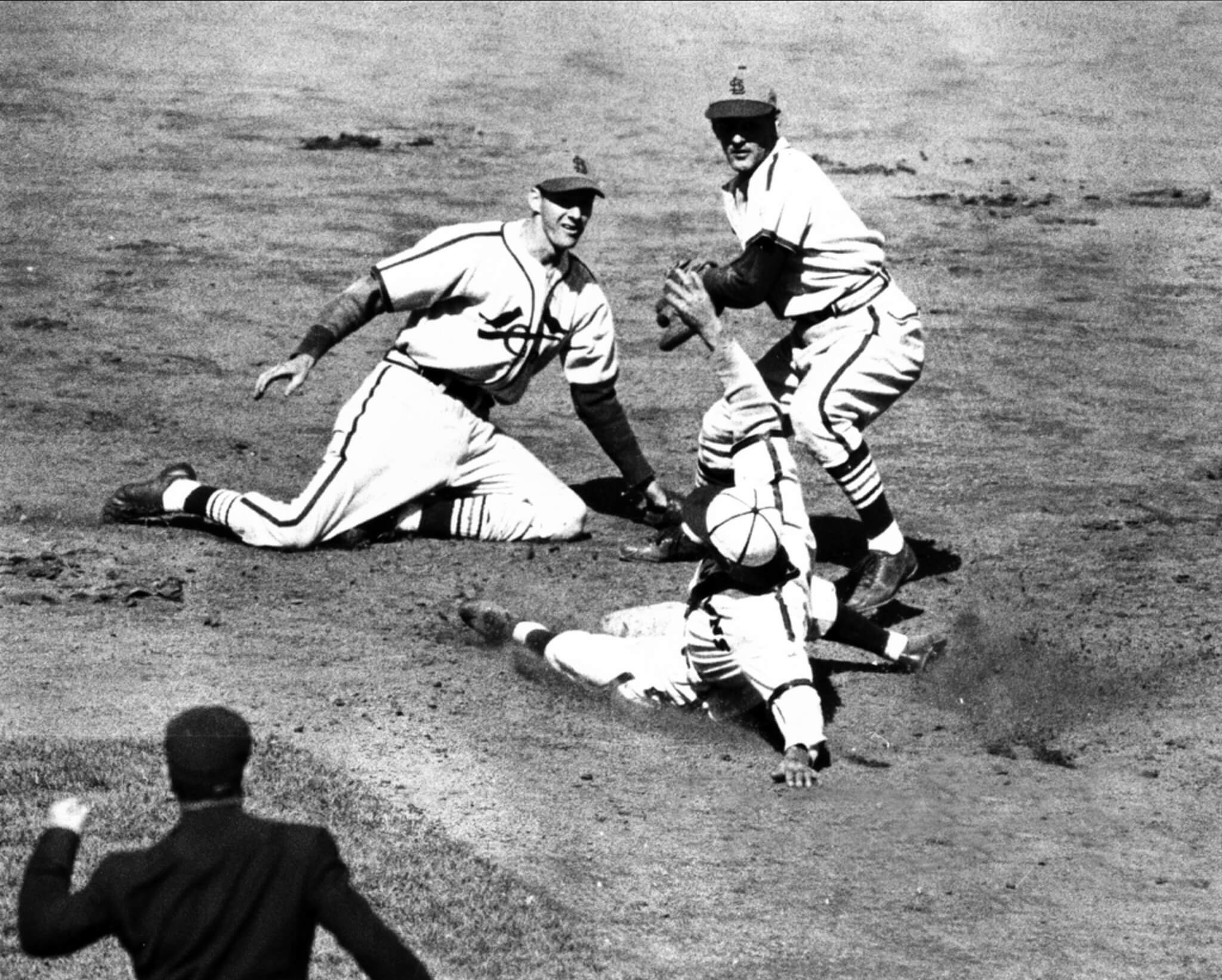
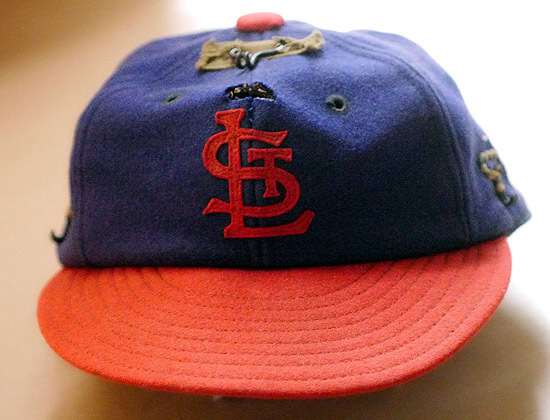

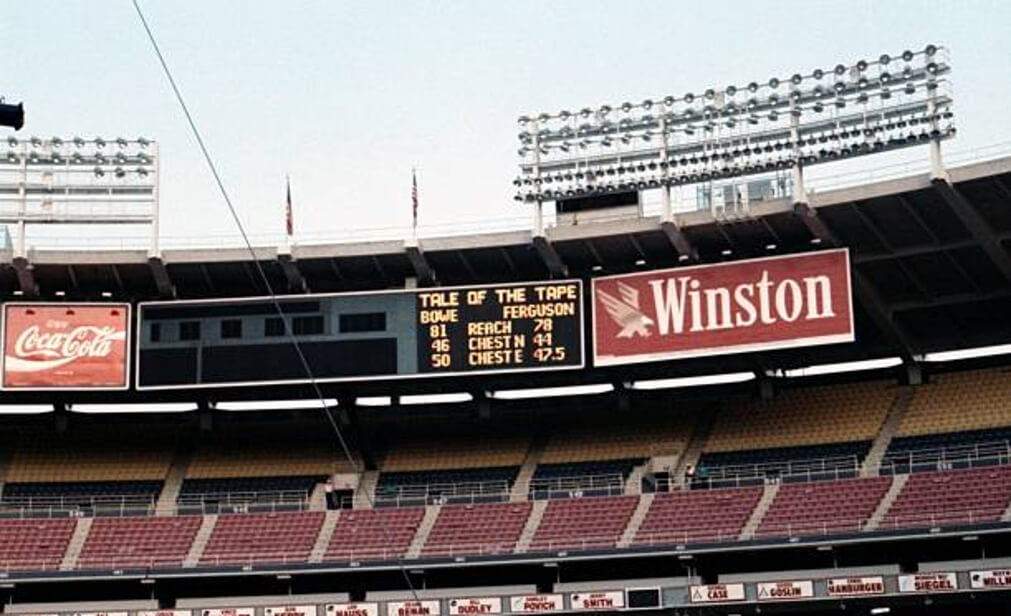
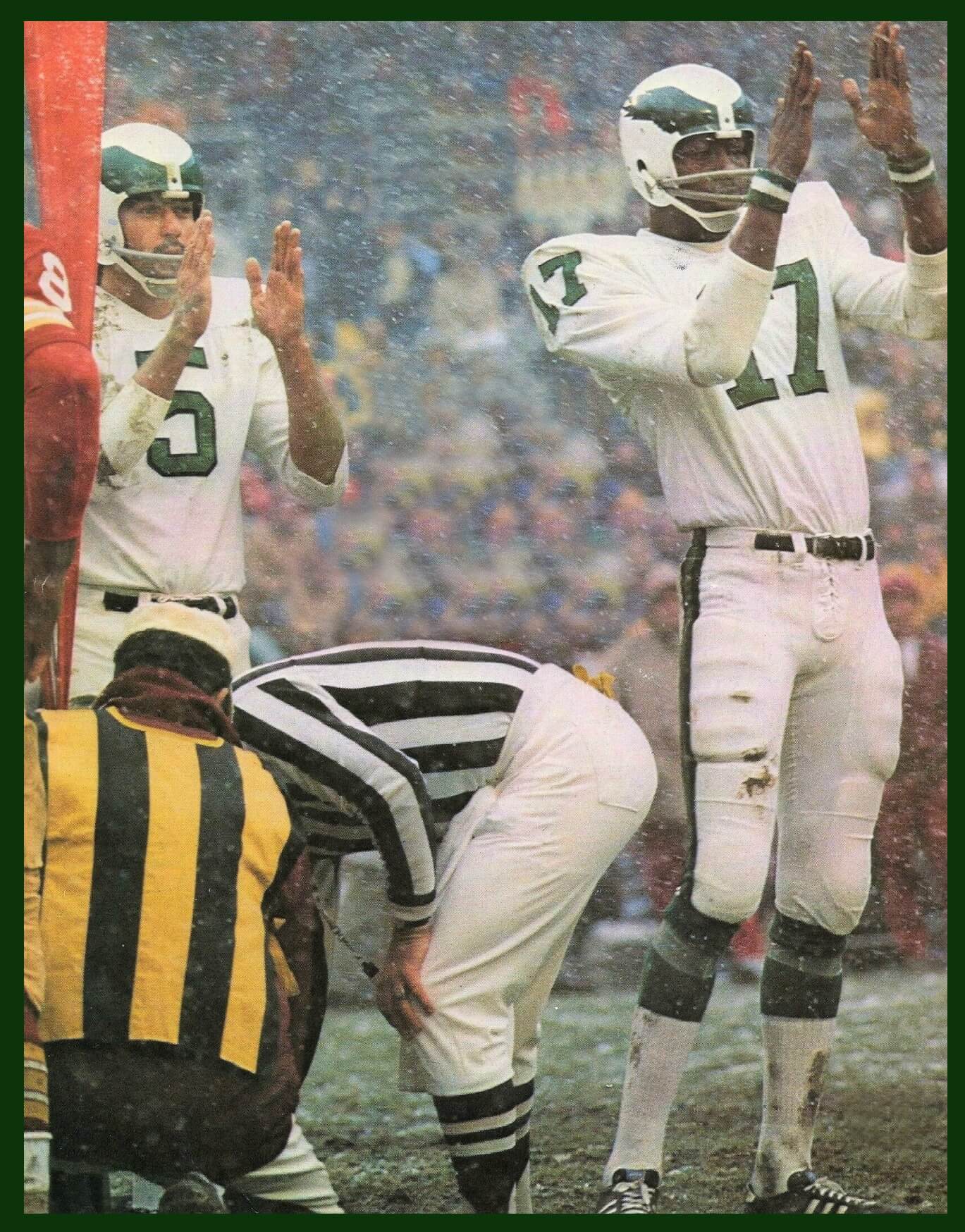
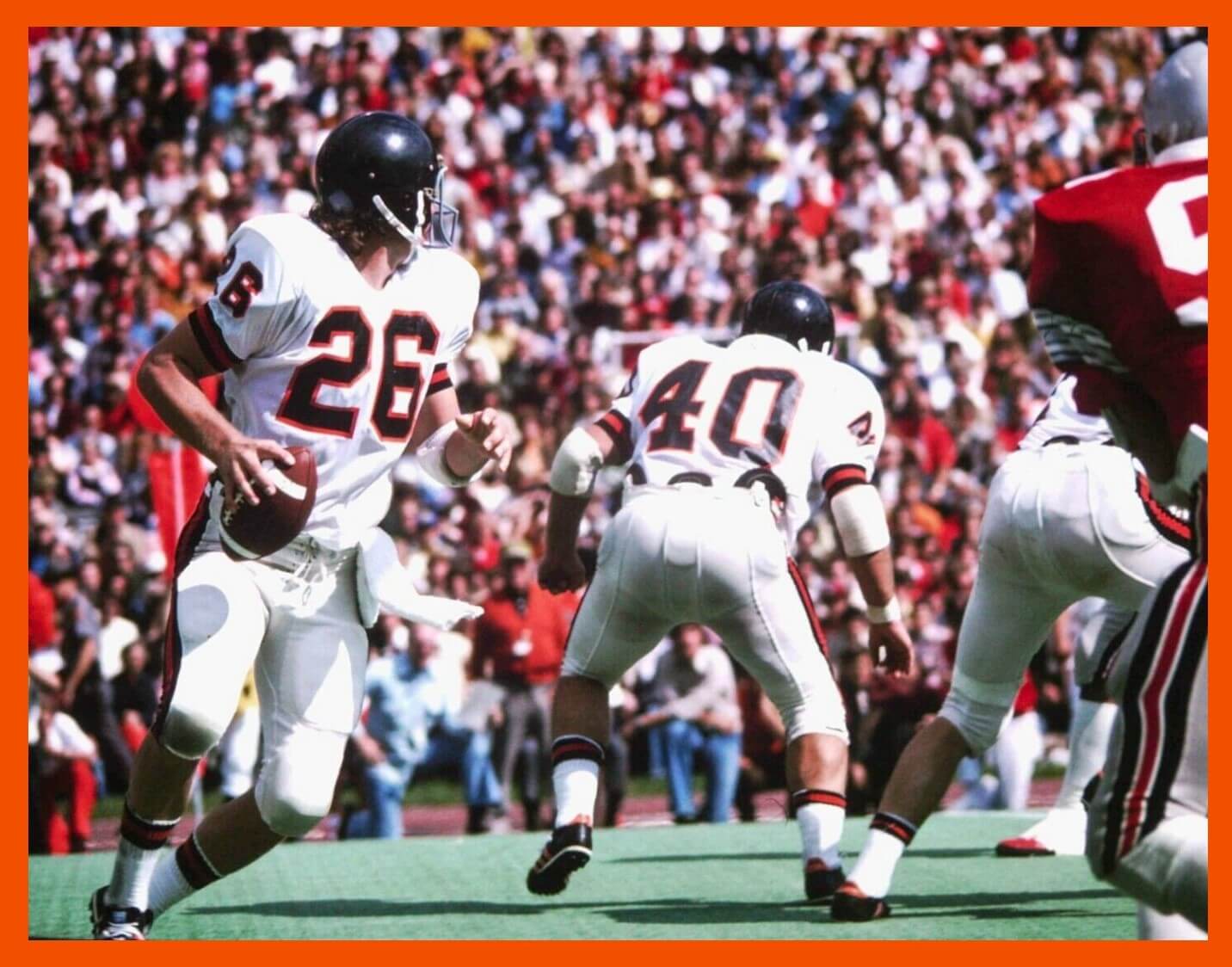

GTGFTS is actually the May 22, 1993 WBheavyweight boxing title fight between champion Riddick Bowe and challenger Jessie Ferguson at RFK Stadium in Washington, D.C. Bowe retained the title on a 2nd round knockout.
Meant WBA title fight.
Ya got it, Mike!
“The Heavyweight Debate”… a sparsely attended bout (only about 9k in attendance, hardly required the use of RFK IMHO.
GTGFTU is the September 21, 1974 game between the Number 2 ranked and home Ohio State Buckeyes and the visiting Oregon State Beavers at Ohio Stadium. Ohio State won 51 – 10 over Oregon State. Pictured is Oregon State quarterback Alvin White (number 26).
Give Mike a cigar! When I sent the picture to Phil, I said it looks like it could have been an exhibition game between Burt Reynolds, Sonny Sixkiller and the rest of the Mean Machine to promote the Longest Yard in 1974. They look like they could have been their road uniforms , minus the word MEAN MACHINE on the jerseys.
What is Blue and What is Red?
The link below should be helpful in understanding B&W film in the 1940s:
link
Very interesting information!
When I was contemplating an article about hockey breezers, my contention was that the Rangers had light-colored shorts before taking into account my color-blindness. Do people who are not color-blind see royal blue and red as having the same grey value?
I’ve been clamoring for the Longine’s clock to get it’s deserved recognition for years! Thanks GC and Phil!
What a beautiful book and what a great Cards hat.